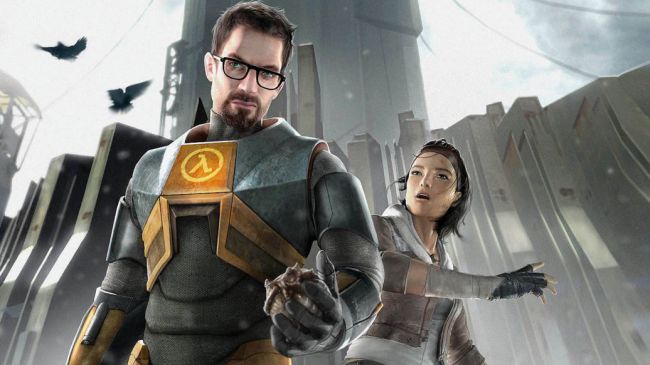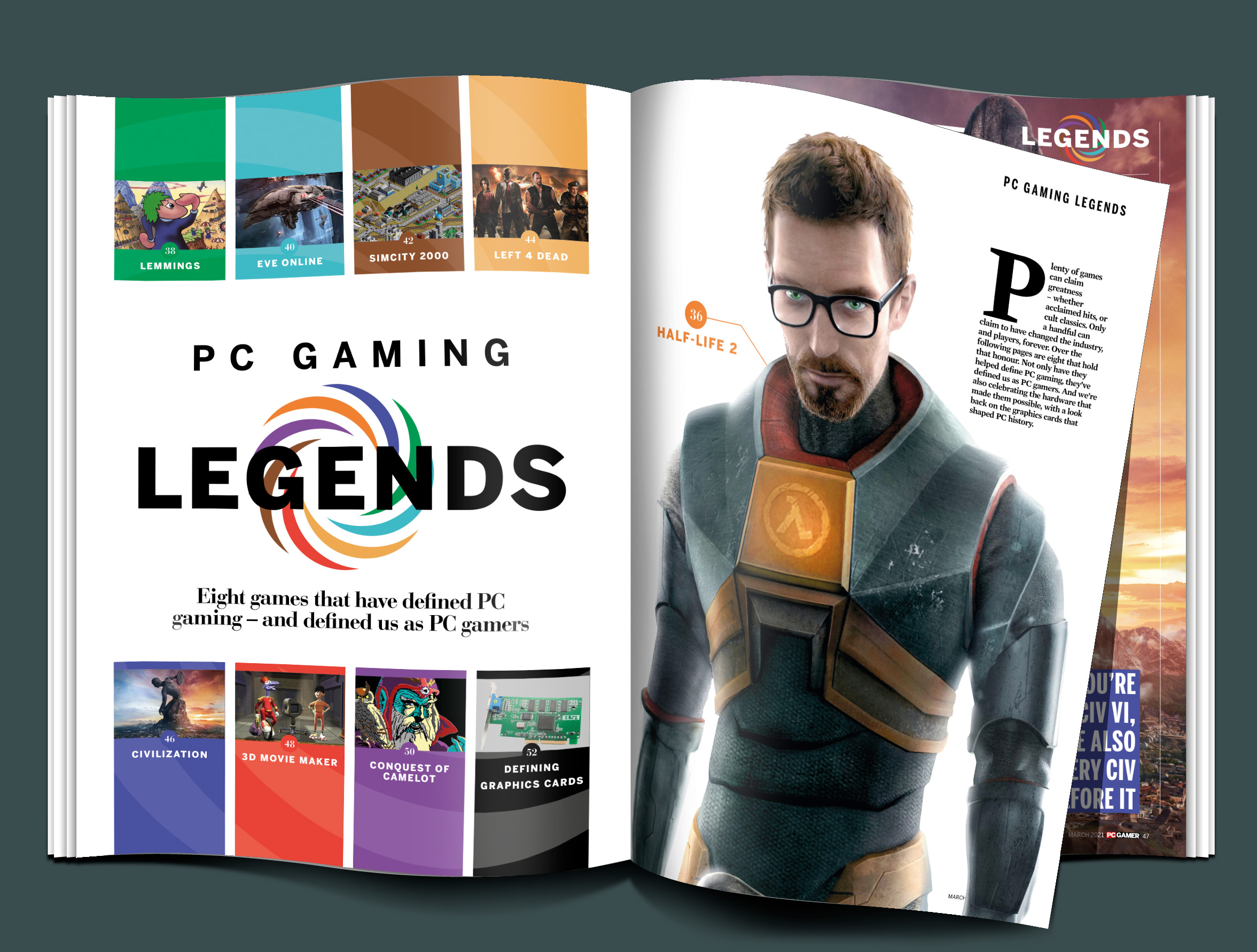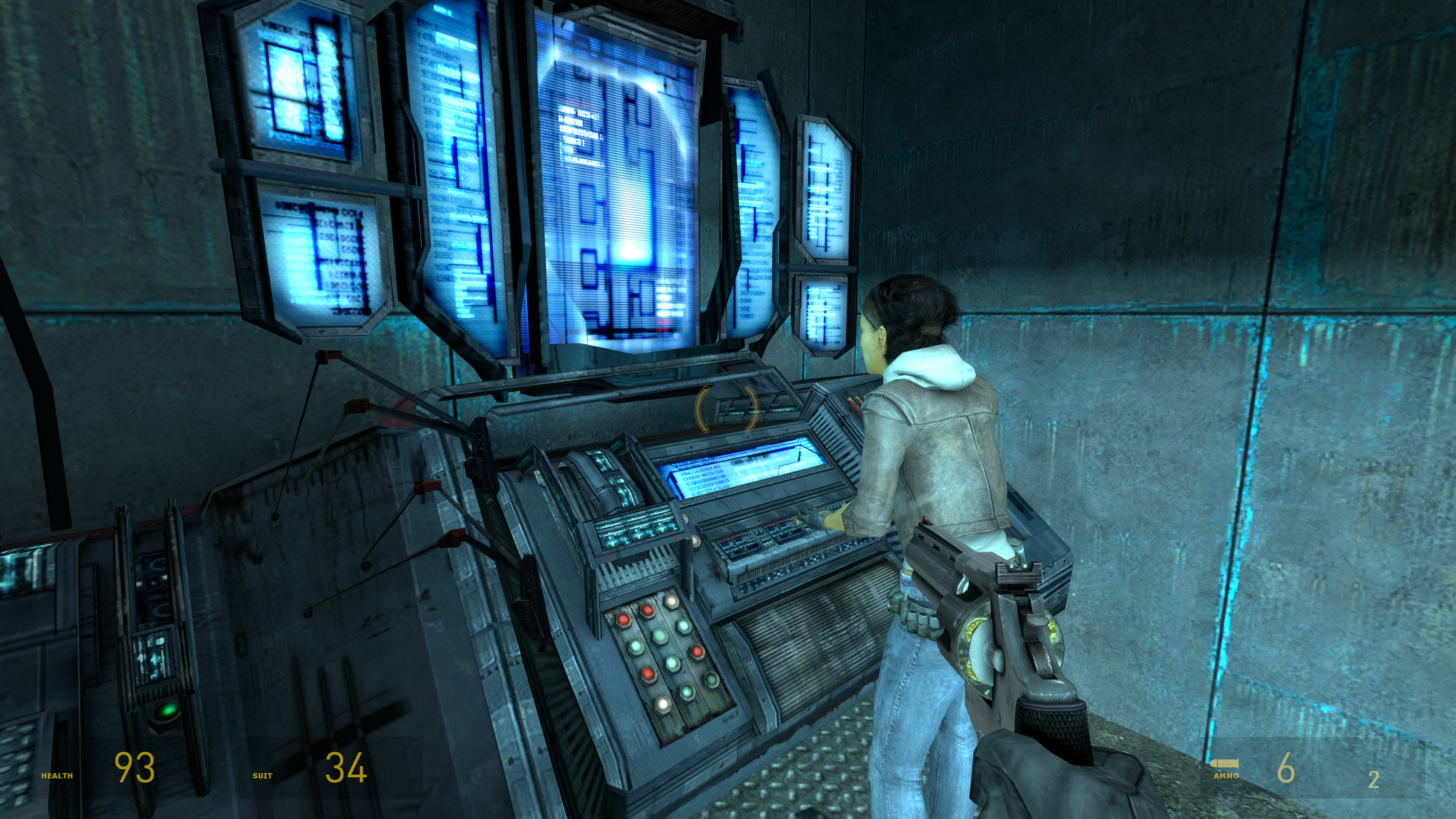The subtle, hands-off storytelling of Half-Life 2 is still hard to beat
Every environment is packed with detail.


This article first appeared in issue 354 of PC Gamer magazine, in our PC Gaming Legends feature. Every month we run exclusive features exploring the world of PC gaming—from behind-the-scenes previews, to incredible community stories, to fascinating interviews, and more.
The magic of Half-Life 2 lies in how it tells its story. In most games developed in the early 2000s you're forced to endure endless exposition about the world and the state it's in—usually in the form of cutscenes. In Half-Life 2, a few scraps of old newspaper stuck to a notice board achieve the same goal; and in a much more evocative way. In the secret laboratory of eccentric scientist Isaac Kleiner, this entirely missable detail refers to a "seven-hour war", Earth surrendering to the invading Combine, and villain Wallace Breen being declared administrator of Earth.
It's everything you need to know in one unassuming texture file—but also, importantly, it leaves enough of the finer details out to let your imagination run wild. This is more effective than an elaborate, expensive cinematic showing the Combine invasion of Earth would ever be, and puts you on a level playing field with Gordon Freeman. Having just been yanked out of stasis by the G-Man, he knows as much as you about this bleak, Orwellian nightmare world; that is, ‘not much', which only adds to the unsettling mystery of how Earth ended up like this.
This kind of environmental storytelling continues throughout Half-Life 2, painting a more detailed picture of everything that happened while Freeman was on ice. And as you learn more about the invaders' infrastructure, the extent of their assault on the planet becomes chillingly clear. At several points in the game you catch glimpses of Stalkers; human bodies gruesomely retro-fitted with alien technology, turned into mindless slaves. Seeing one out of the corner of your eye is, again, more affecting than having someone sit you down and tell you everything about them.

Free reign
Half-Life 2 is a game that plays to the strengths of the medium, using player agency as a way to tell a story in a more interesting, intimate way. It's also a masterclass in subtlety. When it's time to travel to Ravenholm, an abandoned town infested with headcrab zombies, all Alyx says, gravely, is, "We don't go to Ravenholm." And that's all it takes. That sentence is absolutely loaded with meaning, and it also makes your first tentative steps into the place scarier. What did she mean by that? Valve understands the power of holding back, that less is more, which is something that eludes many developers even now, 16 years later.
Of course, storytelling is just one part of the package. Half-Life 2 is also a great FPS, with the gravity gun adding an improvisational feel to its firefights. Switching to this once revolutionary physics-manipulating weapon when you're backed into a corner, plucking a saw blade or radiator out of the level and transforming it into a deadly weapon, still feels incredible. The raid on Nova Prospekt, the brutal Combine prison, is tense and thrilling, and working with the resistance in City 17 towards the end of the game features some superb set-pieces.
If you haven't played it for a while, you might wonder if the people who still eulogise Half-Life 2 are half-remembering it through a mist of nostalgia. But play it and you realise that, although it has aged in some ways, it still feels like an important, landmark game. It still delivers as a first-person shooter, and the way it relays its story is still wonderfully subtle and restrained. It's also exciting to revisit when you consider that Valve may be falling back in love with the series. The end of VR prequel Half-Life: Alyx dramatically opens up the very real possibility of a Half-Life 3, teeing up a sequel I'd lost all hope of ever being made.
The biggest gaming news, reviews and hardware deals
Keep up to date with the most important stories and the best deals, as picked by the PC Gamer team.
If it’s set in space, Andy will probably write about it. He loves sci-fi, adventure games, taking screenshots, Twin Peaks, weird sims, Alien: Isolation, and anything with a good story.


